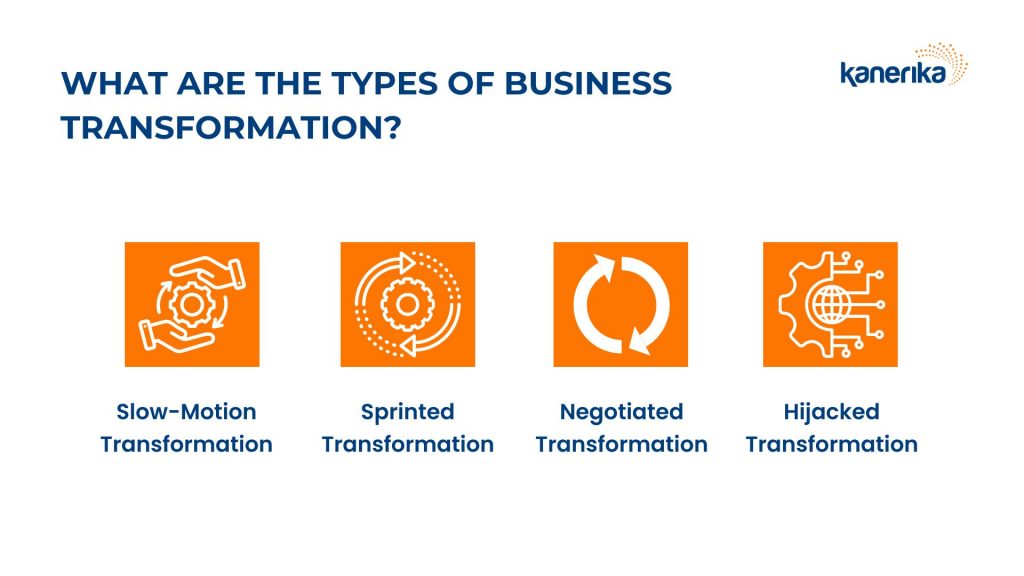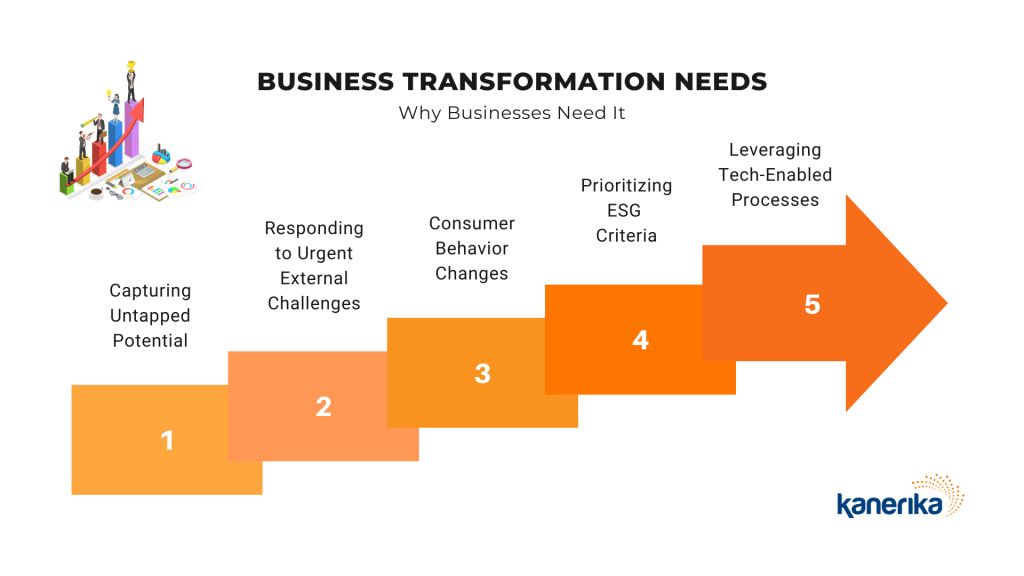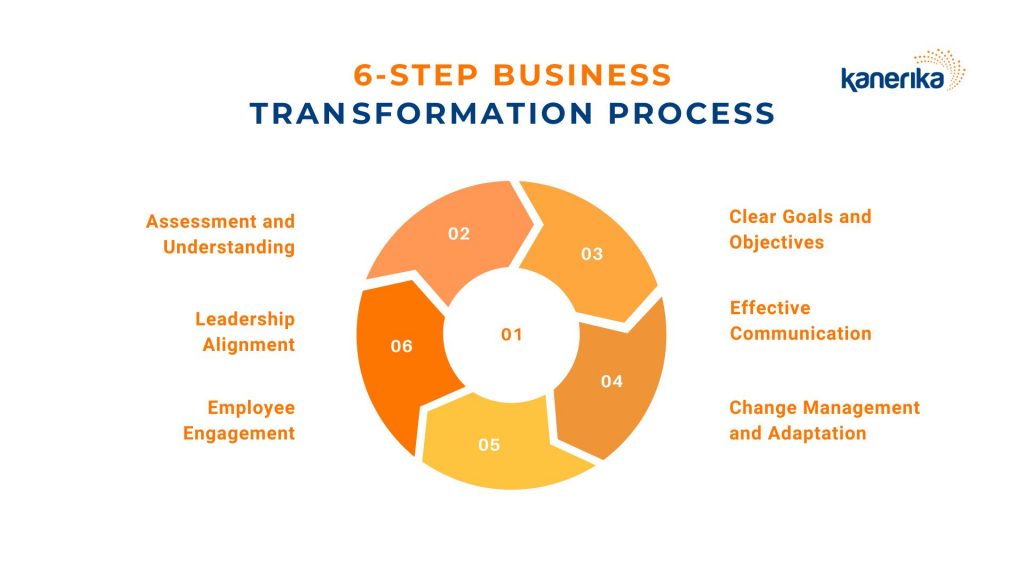“Even if you are on the right track, you’ll get run over if you just sit there.” Actor Will Rogers’ witty quote rings true for today’s businesses.
For example, think of Adobe. Once known for its PDF Reader and famed photo-editing tool Photoshop, Adobe’s business model has changed significantly despite its massive success.
The company shifted from traditional, physical software products to a cloud-based model with Adobe Creative Cloud. This transition allowed frequent updates, new services, and recurring revenue – benefits that were perfect for Adobe as consumers began shifting to online cloud systems.
On the flip side, Kodak, once a giant in photography, missed the pivotal shift from film to digital cameras, prioritizing legacy technologies over embracing innovation. This misstep cost them dearly, leading to a dramatic decline and eventual bankruptcy in 2012.
Kodak’s story is a warning to all businesses – if companies cannot adapt and transform their businesses to fit the needs of tomorrow, their businesses will fail.
So how does a business craft the right business transformation strategy? What factors influence such transformation, and what are the different kinds of business transformation strategies?
This article delves into the essential business transformation strategies that empower enterprises to thrive in 2024. We’ll explore key trends, emerging technologies, and practical approaches to unlock the most effective business transformation strategies for enterprises.
Table of Content
- What is Business Transformation?
- Exploring the 4 Types of Business Transformation
- Why Your Company Needs a Business Transformation?
- How Business Transformation Can Benefit Your Business
- 6 Steps for Successful Business Transformation
- Kanerika – Your Partner in Business Transformation
- FAQs

What is Business Transformation?
Business transformation refers to the process of fundamentally changing the way a company operates. This can be due to shifts in market dynamics, technological advancements, or other external factors.
It’s not just about tweaking processes or adding new tools; it’s a holistic shift that touches everything from people and culture to technology and strategies.
One of the best examples of this is the well executed business transformation strategy of Microsoft. Under Steve Ballmer, it was known as a tech powerhouse that sold operating systems and associated software.
Led by CEO Satya Nadella, Microsoft underwent a significant cultural shift, fostering innovation and agility. Embracing Azure cloud technology, Microsoft transitioned from traditional software to cloud-based services.
There are four popular types of business transformations used by global businesses – slow-motion, sprinted, negotiated, and hijacked transformations. We will cover each of these in detail in the next section.

Exploring the 4 Types of Business Transformation

The term “business transformation” encompasses a broad spectrum of initiatives. Several distinct types of business transformation strategies emerge, which differ depending on the requirements and objectives of the business.
Remember, these are just broad categories, and real-world transformations often combine elements of different types.
Slow-Motion Transformation
- Pace: Gradual and incremental change over several years or even a decade.
- Driven by: Often initiated by internal leadership with a long-term vision.
- Characteristics: Carefully planned, with minimal disruption to daily operations. Emphasis on employee buy-in and cultural shifts.
- Example: Implementing new management methodologies or gradually shifting focus to new markets.
Sprinted Transformation
- Pace: Rapid and focused change implemented quickly, often within months.
- Driven by: Urgent internal needs or opportunities, like responding to competitive threats or technological advancements.
- Characteristics: High intensity, requiring significant resources and potentially disruptive to daily operations. Requires strong leadership and communication to manage change effectively.
- Example: Launching a new product line or adopting a new technology platform.
Negotiated Transformation
- Pace: Can vary depending on negotiation process, but often more controlled than hijacked transformations.
- Driven by: External demands, such as regulatory changes or industry standards.
- Characteristics: Requires negotiation and adaptation to external requirements while aligning with organizational goals.
- Example: Complying with new data privacy regulations or adapting to industry-wide technological standards.
Hijacked Transformation
- Pace: Unforeseen and often rapid, triggered by disruptive external events.
- Driven by: Primarily driven by external forces beyond the organization’s control, such as economic crises or technological disruptions.
- Characteristics: Can be highly disruptive and require immediate action and adaptation.
- Example: Responding to a sudden shift in customer behavior or a competitor’s breakthrough innovation.
Choosing the Right Type
The best type of transformation depends on your specific situation and goals.
- Slow-motion is ideal for long-term strategic shifts with minimal disruption.
- Sprinted is effective for urgent needs and seizing opportunities but needs careful planning to mitigate disruption.
- Negotiated requires adapting to external demands while balancing your own goals.
- Hijacked demands adaptability and quick action to overcome unforeseen challenges.
Read More – Key Considerations for a Successful Digital Transformation Strategy
Why Your Company Needs a Business Transformation?

Business transformation has become more critical than ever due to increasing competition and the rise of disruptive technologies. Organizations must adapt, innovate, and stay competitive to thrive. Let’s explore why your company should consider implementing a business transformation strategy.
- Capturing Untapped Potential
Business transformations allow companies to unlock untapped potential. Whether it’s optimizing processes or tapping into new markets, transformation enables organizations to maximize their value creation opportunities.
By identifying inefficiencies and addressing them strategically, companies can achieve sustainable growth.
For example, by implementing lean manufacturing principles, a manufacturing company can streamline production processes, reduce waste, and improve overall efficiency. This leads to increased productivity and profitability.
- Responding to Urgent External Challenges
Disruptive forces, such as new market entrants or technological advancements, demand swift action. Companies must proactively address external challenges by transforming their operations, business models, and strategies.
Agility and adaptability are key to survival. For instance, in response to the COVID-19 pandemic, many companies rapidly shifted to remote work arrangements. They embraced digital communication tools and diversified their supply chains to mitigate risks and ensure business continuity.

- Consumer Behavior Changes
Technology continually reshapes consumer behavior. Organizations that fail to adapt may become obsolete. A digital business transformation strategy allows companies to stay ahead of industry discontinuities, embrace digital trends, and align with changing customer preferences.
Whether it’s adopting e-commerce, enhancing digital services, or leveraging data analytics, transformation keeps businesses relevant.
For example, a traditional brick-and-mortar retailer may undergo a digital transformation to establish an online presence. They can improve omnichannel customer experiences and compete more effectively with e-commerce giants like Amazon.
- Prioritizing Environmental, Social, and Governance (ESG) Criteria
Sustainable practices are no longer optional. Investors, customers, and regulators increasingly value ESG considerations.
Companies that integrate environmental responsibility, social impact, and ethical governance into their core operations gain a competitive edge.
The chosen business transformation strategy can embed ESG principles and create long-term value and positive societal impact.
If a manufacturing company implements sustainable manufacturing practices, and reduces carbon emissions, it will enhance its reputation. This will allow it to attract environmentally conscious customers and investors.
- Leveraging Technology and Tech-Enabled Processes
Nearly all transformations are, in essence, digital transformations. Investing in technology and adopting tech-enabled processes is essential.
Cloud computing, automation, artificial intelligence, and data analytics empower companies to streamline operations, and make data-driven decisions.
Large-scale digital initiatives can be standalone efforts within a broader transformation.
For example, a financial services firm may implement robotic process automation (RPA) to automate repetitive tasks, improve operational efficiency. It might simultaneously leverage data analytics to gain insights into customer behavior, personalize marketing efforts, and drive revenue growth.
How Business Transformation Can Benefit Your Business
Business transformation is a multi-layered process. Changes made to a company’s operations, structure, culture, and technologies have enormous upsides in the long-term, provided they are strategized well.
Implementing an effective digital business transformation strategy can yield numerous benefits for your business across different domains:
-
Management Transformation
Management transformation focuses on improving leadership effectiveness, internal relations, and decision-making processes within the organization.
By implementing management transformation initiatives, businesses can reduce micromanagement, empower employees, and foster a culture of innovation.
Effective leadership fosters trust, collaboration, and alignment towards common goals, leading to improved employee morale and performance.

Cultural transformation involves adjusting company values, behaviors, and norms to align with the organization’s strategic objectives and desired outcomes.
By nurturing a positive and inclusive work culture that reflects core values, businesses can enhance employee engagement and satisfaction.
A strong organizational culture fosters teamwork, creativity, and resilience. When employees feel connected to the company’s mission, they are likely to go above and beyond in their roles. This leads to improved organizational performance.
-
Organizational Transformation
Organizational transformation focuses on changing the processes and workflows within the company to enhance efficiency and responsiveness.
By redefining roles and responsibilities, optimizing workflows, and eliminating silos, businesses can streamline operations and improve overall productivity.
Enhanced collaboration across departments and functions enables faster problem-solving, better communication, and more effective decision-making.
Furthermore, organizational transformation fosters a culture of continuous improvement, where employees are encouraged to identify inefficiencies and implement solutions.
Let’s explore this using a case study.
A global healthcare company encountered difficulties in supporting patients with self-care because of problems with their system setup. These included issues with how the system was designed, its limitations, and concerns about keeping patient data safe.
To tackle these challenges, Kanerika’s team redesigned the system to make it faster, more scalable, and more secure while also ensuring better control and adaptability. They also utilized cloud technology along with modern data tools to conduct in-depth analytics.
The results were impressive: a 30% boost in how well the system performed, a 35% decrease in the costs of maintaining it, and a remarkable 80% enhancement in response time.
IT transformation involves adopting new technologies and digital solutions to improve communication, efficiency, and customer relations.
By investing in advanced software, cloud-based platforms, and data analytics tools, businesses can streamline internal processes and automate repetitive tasks. A digital business transformation strategy allows you to gain actionable insights into customer behavior and market trends. Integrating advanced technologies such as AI, IoT, and blockchain also transforms operational capabilities.
Improved information systems enable businesses to deliver personalized customer experiences, enhance service quality, and drive business growth.
Here’s a case study to show IT transformation in action.
An US IT firm encountered HR obstacles from outdated recruitment methods, which were causing delays and inefficiencies within the hiring process.
In response, Kanerika introduced UiPath-driven RPA automation to streamline candidate screening.
An HR bot was implemented to collect and manage resumes from multiple channels, improving candidate oversight. This initiative guaranteed precise candidate assessment and expedited processing, resulting in elevated hiring standards.
The outcomes yielded a 30% surge in conversion rates, a 46% reduction in time-to-hire, and an impressive 70% decrease in HR workload.
Market transformation is vital for businesses to adapt to rapidly changing market conditions and consumer preferences.
This process involves leveraging data analytics for deep consumer insights. This enables businesses to develop customer-centric products and services.
Adaptive marketing strategies and product development ensure responsiveness to market shifts, which in turn allow companies to maintain relevance and competitiveness.
Strategic partnerships expand market reach and foster innovation, while aligning with sustainability and social responsibility, which appeal to modern consumer values.
Such a transformation was carried out by Kanerika’s team for a leading company in the travel industry. Kanerika developed a bot that would navigate various travel websites and capture pricing data.
It would then utilize data analysis in research and automate travel booking through an intelligent pricing discovery process, ensuring a smooth customer experience.
This helped the company decrease their data consolidation timeline from a week to mere hours. Overall, there was a 15% increase in customer growth, 24% boost in revenue and 38% reduction in booking time.
6 Steps for Successful Business Transformation

Embarking on a business transformation journey can be daunting for new businesses. Usually, this can be managed by crafting a well-defined roadmap.
Here are some key steps to pave the way for a successful transformation:
-
Assessment and Understanding
Evaluate your current business situation, identifying challenges and opportunities for growth. Conduct a comprehensive analysis of operations and market position to inform strategic decisions.
Secure executive buy-in and commitment, ensuring alignment with the transformation vision and goals. Empower top management to lead by example and champion change throughout the organization.
Engage employees through regular communication and feedback channels, highlighting the benefits of the transformation. Foster a supportive environment where employees feel valued and empowered to contribute to the success of the initiative. Encourage collaboration and involvement in decision-making processes to increase ownership and commitment.

-
Clear Goals and Objectives
Set clear, measurable goals and objectives for the transformation, aligning them with the organization’s strategic priorities. Define milestones to track progress and ensure accountability, keeping teams focused and motivated towards achieving desired outcomes.
Develop a robust communication strategy to ensure stakeholders are informed and engaged throughout the transformation journey. Create an open and transparent culture where feedback is encouraged and valued, promoting clarity and alignment. Utilize various communication channels to reach different audiences and facilitate dialogue and collaboration.
-
Change Management and Adaptation
Implement efficient change management processes to navigate resistance and mitigate risks effectively. Bring in a culture of adaptability and innovation, encouraging employees to embrace new ways of working and experimenting with novel approaches. Provide support and resources to facilitate learning and development, empowering teams to thrive in a digital business transformation strategy.
Kanerika – Your Partner in Business Transformation
With decades of experience and a team of over 100 skilled professionals, Kanerika’s team empowers businesses across industries to achieve their business transformation goals.
We guide you through every step of the journey, from strategy and planning to cultural change and talent acquisition. Our focus is on ensuring your transformation journey is sustainable and impactful.
Contact us today to start your transformation journey!

FAQs
What are the 4 stages of business transformation?
Awareness: Recognizing the need for change.Desire: Building a collective desire to participate in and support the change.Knowledge: Understanding how to change and what the change looks like.Ability: Implementing the required skills and behaviors.
What are transformation strategies?
Transformation strategies are comprehensive plans that guide the redefining of an organization’s business processes, corporate structure, and culture. They often involve digital transformation, restructuring operational processes, and adopting new business models.
What are the 3 key elements of business transformation systems?
People: The involvement, engagement, and development of employees.Processes: The redesign and improvement of business processes.Technology: Leveraging technology to enhance capabilities and efficiency.
What is a business transformation model?
A business transformation model is a framework used to plan and execute significant changes in an organization’s structure, direction, and capabilities. It typically includes phases like assessment, planning, implementation, and evaluation.
What is an example of a successful business transformation?
Adobe’s shift from traditional software licensing to a cloud-based subscription model is a prominent example. This transformation significantly increased their market reach and revenue.
How do I start a business transformation?
Begin with a comprehensive assessment of the current business state, define clear objectives, develop a strategic transformation plan, engage stakeholders, and establish a dedicated transformation team.
What is the goal of business transformation?
The primary goal is to fundamentally change the systems, processes, people, and technology across an organization to achieve measurable improvements in efficiency, effectiveness, and stakeholder satisfaction.
What is the business transformation life cycle?
It typically includes stages such as vision and strategy development, analysis and planning, implementation, monitoring and controlling, and continuous improvement.
What is the difference between business transformation and business change?
Business transformation is a comprehensive and fundamental shift in how an organization conducts business, affecting its culture, processes, and strategies. Business change often refers to smaller-scale changes or adjustments within the existing business model.
What is business agility transformation?
Business agility transformation refers to the process of making an organization more adaptive, flexible, and responsive to changes in the market or environment, often through adopting agile methodologies and mindsets.